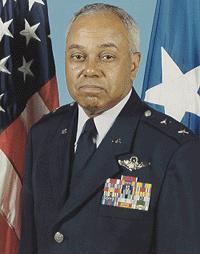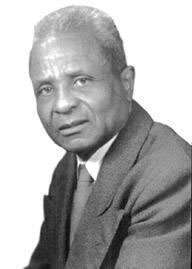
A sit-in or sit-down is a form of direct action that involves one or more people occupying an area for a protest, often to promote political, social, or economic change. The protestors gather conspicuously in a space or building, refusing to move unless their demands are met. The often clearly visible demonstrations are intended to spread awareness among the public, or disrupt the goings-on of the protested organisation. Lunch counter sit-ins were a nonviolent form of protest used to oppose segregation during the civil rights movement, and often provoked heckling and violence from those opposed to their message.

The Greensboro sit-ins were a series of nonviolent protests in February to July 1960, primarily in the Woolworth store—now the International Civil Rights Center and Museum—in Greensboro, North Carolina, which led to the F. W. Woolworth Company department store chain removing its policy of racial segregation in the Southern United States. While not the first sit-in of the civil rights movement, the Greensboro sit-ins were an instrumental action, and also the best-known sit-ins of the civil rights movement. They are considered a catalyst to the subsequent sit-in movement, in which 70,000 people participated. This sit-in was a contributing factor in the formation of the Student Nonviolent Coordinating Committee (SNCC).

The Nashville sit-ins, which lasted from February 13 to May 10, 1960, were part of a protest to end racial segregation at lunch counters in downtown Nashville, Tennessee. The sit-in campaign, coordinated by the Nashville Student Movement and the Nashville Christian Leadership Council, was notable for its early success and its emphasis on disciplined nonviolence. It was part of a broader sit-in movement that spread across the southern United States in the wake of the Greensboro sit-ins in North Carolina.
February One: The Story of the Greensboro Four is a 2003 documentary film by Rebecca Cerese and Steven Channing. Nationally broadcast on Independent Lens on PBS, it tells the story of The Greensboro Four, four young college freshman, Joseph McNeil, David Richmond, Franklin McCain and Ezell Blair, Jr. now Jibreel Khazan, who staged a sit-in at Woolworth's in 1960 to protest segregation practices. Based largely on first hand accounts and rare archival footage, the documentary film February One documents one volatile winter in Greensboro that not only challenged public accommodation customs and laws in North Carolina, but served as one of the blueprints for the nonviolent protests that occurred across the South and the nation during the Civil Rights Movement in the 1960s.

The International Civil Rights Center & Museum (ICRCM) is located in Greensboro, North Carolina, United States. Its building formerly housed the Woolworth's, the site of a nonviolent protest in the civil rights movement. Four students from North Carolina Agricultural and Technical State University started the Greensboro sit-ins at a "whites only" lunch counter on February 1, 1960. The four students were Franklin McCain, Joseph McNeil, Ezell Blair Jr., and David Richmond. The next day there were twenty students. The aim of the museum's founders is to ensure that history remembers the actions of the A&T Four, those who joined them in the daily Woolworth's sit-ins, and others around the country who took part in sit-ins and in the civil rights movement. The Museum is currently supported by earned admissions and Museum Store revenues. The project also receives donations from private donors as a means of continuing its operations. The museum was founded in 1993 and officially opened its doors fifty years to the day after the sit-in movements in Greensboro NC.
Jibreel Khazan is a civil rights activist who is best known as a member of the Greensboro Four, a group of African American college students who, on February 1, 1960, sat down at a segregated Woolworth's lunch counter in downtown Greensboro, North Carolina challenging the store's policy of denying service to non-white customers. The protests and the subsequent events were major milestones in the Civil Rights Movement.

Clarence Lee "Curly" Harris was the store manager at the F. W. Woolworth Company store in Greensboro, North Carolina, during the Greensboro sit-ins in 1960.
Douglas E. Moore was a Methodist minister who organized the 1957 Royal Ice Cream Sit-in in Durham, North Carolina. Moore entered the ministry at a young age. After finding himself dissatisfied with what he perceived as a lack of action among his divinity peers, he decided to take a more activist course. Shortly after becoming a pastor in Durham, Moore decided to challenge the city's power structure via the Royal Ice Cream Sit-in, a protest in which he and several others sat down in the white section of an ice cream parlor and asked to be served. The sit-in failed to challenge segregation in the short run, and Moore's actions provoked a myriad of negative reactions from many white and African-American leaders, who considered his efforts far too radical. Nevertheless, Moore continued to press forward with his agenda of activism.

Joseph Alfred McNeil is a retired major general in the United States Air Force who is best known for being a member of the Greensboro Four—a group of African American college students who, on February 1, 1960, sat down at a segregated Woolworth's lunch counter in downtown Greensboro, North Carolina, challenging the store's policy of denying service to non-white customers.
The Dockum Drug Store sit-in was one of the first organized lunch counter sit-ins for the purpose of integrating segregated establishments in the United States. The protest began on July 19, 1958 in downtown Wichita, Kansas, at a Dockum Drug Store, in which protesters would sit at the counter all day until the store closed, ignoring taunts from counter-protesters. The sit-in ended three weeks later when the owner relented and agreed to serve black patrons. Though it wasn't the first sit-in, it is notable for happening before the well known 1960 Greensboro sit-ins.
The Richmond 34 refers to a group of Virginia Union University students who participated in a nonviolent sit-in at the lunch counter of Thalhimers department store in downtown Richmond, Virginia. The event was one of many sit-ins to occur throughout the civil rights movement in the 1960s and was essential to helping desegregate the city of Richmond.
The Royal Ice Cream sit-in was a nonviolent protest in Durham, North Carolina, that led to a court case on the legality of segregated facilities. The demonstration took place on June 23, 1957 when a group of African American protesters, led by Reverend Douglas E. Moore, entered the Royal Ice Cream Parlor and sat in the section reserved for white patrons. When asked to move, the protesters refused and were arrested for trespassing. The case was appealed unsuccessfully to the County and State Superior Courts.

Franklin Eugene McCain was an American civil rights activist and member of the Greensboro Four. McCain, along with fellow North Carolina A&T State University students Ezell Blair Jr., Joseph McNeil and David Richmond, staged a sit-in protest at the Woolworth lunch counter in Greensboro, North Carolina, on February 1, 1960, after they were refused service due to the color of their skin. Their actions were credited with launching the Greensboro sit-ins, a massive protest across state lines involving mostly students who took a stand against discrimination in restaurants and stores by refusing to leave when service was denied to them. The sit-ins successfully brought about the reversal of Woolworth's policy of racial segregation in their southern stores, and increased national sentiment to the fight of African-Americans in the south.
The history of North Carolina Agricultural and Technical State University, the first land grant college for people of color in the state of North Carolina, can be traced back to 1890, when the United States Congress enacted the Second Morrill Act which mandated that states provide separate colleges for the colored race. The "Agricultural and Mechanical College for the Colored Race" was established On March 9, 1891 by an act of the General Assembly of North Carolina and began in Raleigh, North Carolina as an annex to Shaw University. The college made a permanent home in Greensboro with the help of monetary and land donation by local citizens. The college granted admission to both men and women from 1893 to 1901, when the board of trustees voted to restrict admission to males only. This policy would remain until 1928, when female students were once again allowed to be admitted.

Warmoth Thomas Gibbs Sr. was an American educator, retired Second Lieutenant in the United States Army, civil rights activist, and fourth president of North Carolina Agricultural and Technical State University. Gibbs was one of the first black commissioned officers in World War I and served as president of then North Carolina Agricultural and Technical College from 1955 to 1960. During his presidency, North Carolina A&T became accredited by the Southern Association of Schools and Colleges.

David Leinail Richmond was a civil rights activist for most of his life, but he was best known for being one of the Greensboro Four. Richmond was a student at North Carolina A&T during the time of the Greensboro protests, but never ended up graduating from A&T. He felt pressure from the residual celebrity of being one of the Greensboro Four; his life was threatened in Greensboro and he was forced to move to Franklin, NC. Eventually, he moved back to Greensboro to take care of his father. Richmond was awarded the Levi Coffin Award for leadership in human rights by the Greensboro Chamber of Commerce in 1980. Richmond seemed to be haunted by the fact that he could not do more to improve his world, and battled alcoholism and depression. He died in 1990 and was awarded a posthumous honorary doctorate degree from North Carolina A&T
The history of the 1954 to 1968 American civil rights movement has been depicted and documented in film, song, theater, television, and the visual arts. These presentations add to and maintain cultural awareness and understanding of the goals, tactics, and accomplishments of the people who organized and participated in this nonviolent movement.

James Barnhill, is an American artist and sculptor, best known for his commissioned statues and public monuments. He currently lives and works in Greensboro, North Carolina, and is an art professor at the North Carolina Agricultural and Technical State University. His sculpture work spans more than three decades.

The sit-in movement, sit-in campaign or student sit-in movement, were a wave of sit-ins that followed the Greensboro sit-ins on February 1, 1960 in North Carolina. The sit-in movement employed the tactic of nonviolent direct action and was a pivotal event during the Civil Rights Movement.
The Atlanta sit-ins were a series of sit-ins that took place in Atlanta, Georgia, United States. Occurring during the sit-in movement of the larger civil rights movement, the sit-ins were organized by the Committee on Appeal for Human Rights, which consisted of students from the Atlanta University Center. The sit-ins were inspired by the Greensboro sit-ins, which had started a month earlier in Greensboro, North Carolina with the goal of desegregating the lunch counters in the city. The Atlanta protests lasted for almost a year before an agreement was made to desegregate the lunch counters in the city.












